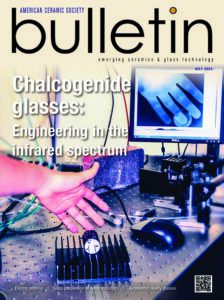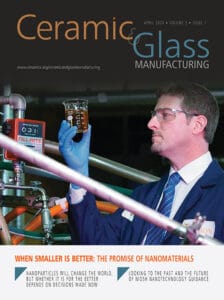
Abstract Title: Infrared Materials and Fiber Optics
At the Naval Research Laboratory (NRL), we are developing infrared glasses, ceramics and optical fibers for many active and passive applications. The chalcogenide glasses transmit from approximately 1 μm to 12 μm in the important infrared wavelength region. Fibers have been developed for passive applications, including light-pipes for remote chemical sensor systems for environmental pollution monitoring, exo-planet discovery, scanning near field optical microscopy and other applications. Active applications have also been developed to exploit the high optical nonlinearity of the fibers to generate broadband IR supercontinuum sources and Raman wavelength shifters. In addition, rare earth doping has been used to create bright sources in the IR. More recent developments have focused on fabricating hollow core negative curvature fiber with waveguide loss >100X lower than the material loss in the infrared. Additionally, fiber devices and components have been designed and fabricated. Examples include IR fiber combiners utilized to couple the output from several QCLs in the MWIR and LWIR into a single output fiber, thereby enabling efficient power and wavelength scaling. By tailoring the composition of the chalcogenide glasses it is possible to control refractive index and dispersion, as well as diffusion to enable graded optics, thereby enabling many new multiband optical lens materials. This enables the optical design engineer to overcome the current bottleneck associated with a limited number of materials to select from. The new optics are leading to huge savings in weight (>2X) by reducing the total number of optics required for a multiband imaging system. High quality ceramic materials were developed with superior thermal and mechanical properties, such as spinel ceramic for window and dome applications. By synthesising high purity powder, ceramic windows were fabricated with ultra-low absorption loss for exit apertures on high energy laser systems. Similarly, rare earth doped Lutetia and Yttria nano-powders have been hot pressed into transparent ceramic laser materials which exhibit record high slope efficiencies. Select rare earth doped nano-powders have also been dispersed in silica fibers to mitigate issues associated with clustering, multiphonon quenching and stimulated Brilluoin scattering. This was achieved by adding a slurry of Er or Ho doped nano-powder into a porous silica preform, drying, collapsing and then fiber drawing. Slope efficiencies for silica fiber lasers of 74% and 85% have now been demonstrated for Er at 1.6 μm and for Ho beyond 2μm. Flexible single crystal fibers have also been grown and have demonstrated amplification. Additional accomplishments include the fabrication of antireflective (AR) moth eye surfaces on these optical components with very low reflection losses (0.02%), large bandwidth, and high laser damage thresholds (~100 J/cm2). The fabrication, properties and applications will be described during the presentation.
Keywords: Optical materials, infrared, optics, ceramics, fibers.
Bio:
Dr. Jasbinder (Jas) S. Sanghera is currently the Acting Superintendent of the Optical Sciences Division at the U. S. Naval Research Laboratory (NRL) located in Washington, DC.
He received a B.S. in Chemistry from the University of Leicester (UK), a Ph.D. in Materials Science from Imperial College of Science and Technology, University of London, UK, as well as a Diploma of Imperial College. After finishing a post-doctoral position at UCLA, he joined NRL as a support contractor but was converted to a govt position, followed by rapid promotion to Section Head, Branch Head and currently Acting Superintendent. In that capacity, he manages and technically guides scientists in all aspects of optical sciences and phenomena, including optical materials being developed for a wide range of applications.
Dr. Sanghera has received numerous awards including being the first recipient of the Young Investigator Award from ISNOG, the Federal Laboratories Consortium National and Mid-Atlantic Awards for Excellence in Technology Transfer, the Sigma Xi Award for Applied Science. He was co-recipient of OSA’s prestigious David Richardson Medal, as well as the Navy’s Arthur E. Bisson Prize. He was elected to the position of Fellow of OSA, SPIE and IAAM. He was awarded the navy’s prestigious E. O. Hulburt Award, in honor of NRLs first director. In 2024, he won the Advanced Materials Award from IAAM. He has transitioned many technologies to the DoD and industry, published over 500 papers, edited a book on “IR Fiber Optics”, presented more than 250 technical talks, and has >140 patents awarded and 70 licensed to industry. In addition, he is an active participant on the committee for several conferences, workshops and NATO groups.
Subscribe to Ceramic Tech Today

Don’t miss the latest ceramic and glass materials news. Receive the CTT newsletter to your email three times a week by subscribing at this link.
Subscribe to Ceramic & Glass Manufacturing Weekly

Don’t miss the latest ceramic and glass business news. Receive the C&GM Weekly newsletter to your email every Monday by subscribing at this link.


